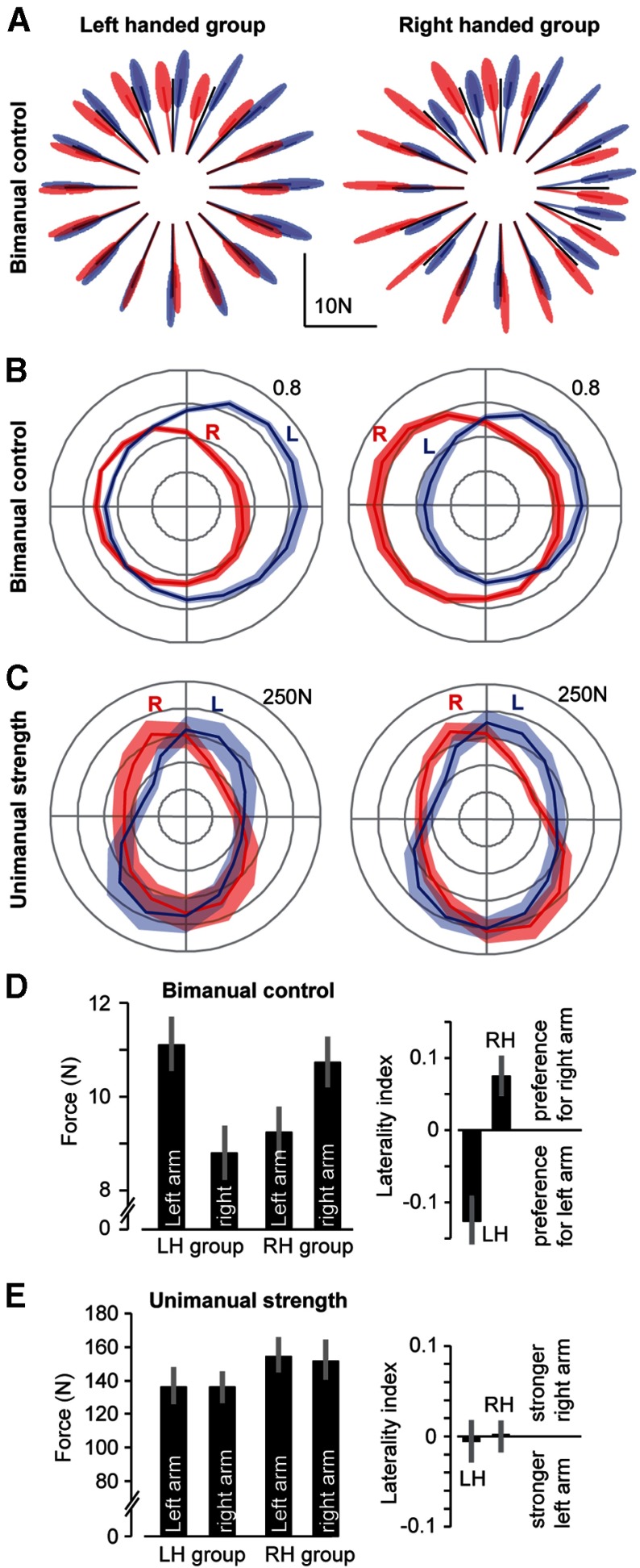Figure 2.
Bimanual control and unimanual strength in LH and RH young volunteers. A, The force vector produced by each arm, represented as a variance–covariance ellipse in which the center location corresponds to the mean of the force vector by each arm and the shading represents between-subject variance. B, The force produced by each arm during bimanual control, represented as the fraction of total force produced by both arms, projected onto the target direction. Shading is between-subject SEM. C, Unimanual MVF as a function of direction. Shading is between-subject SEM. D, Left plot, Force produced by each arm, averaged over all directions. Laterality index refers to the difference between the force produced by the right and left arms, divided by the sum of forces in the two arms (Eq. 9). Error bars indicate between-subject SEM. E, Left plot, MVF produced by each arm, averaged over all directions. Laterality index refers to the difference between MVF produced by the right and left arms, divided by the sum of MVFs of the two arms. Error bars indicate between-subject SEM.

